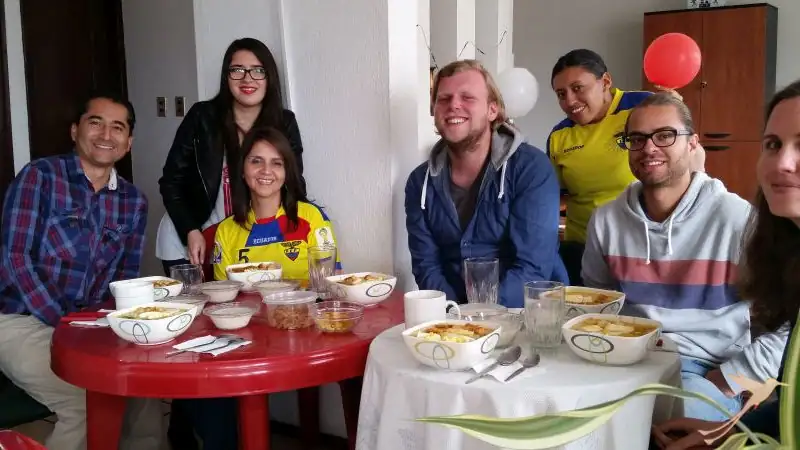
The traditional dish “Fanesca” is usually prepared to be eaten and enjoyed during Lent. The most typical day to eat this dish on is Good Friday.
The origin
There are many different narrations about the origin of this dish. One of these narrations says that in the colonial era the Spanish brought a French chef to Ecuador to prepare a dish that would be adequate for the penitence of the Holy Week. Another version is that a women named “Juana” created this dish in a monastery in Quito. This is the reason why they used to call the plate JUANESCA.
Nevertheless studies of the Ecuadorian gastronomy have investigated that Fanesca has its origins in the pre-Hispanic Era. More than 4,000 years ago there were held “Festivities of the Sun” in which all the typical beans and grains of the country were used. This was the beginning of Fanesca. Afterwards, it was brought to perfection with ingredients of the Colonial cuisine.
During harvest time and the Equinox Day, the indigenous celebrate in the Andean region of Ecuador “Muchuc Nina” (The Day of the New Fire) by cooking the fresh beans and grains in clay pots. This indigenous tradition is mingled with religious beliefs of the Catholic Church and with symbols of the Spanish. This resulted in a combination which you can observe in the Holy Week, the Semana Santa, where the death and passion of Jesus Christ, promulgated by the Spanish, were brought together with the indigenous ritual “Muchuc Runa”. However, from the 19th century on, the Fanesca has be seen in Quito as 100% Ecuadorian.

The ingredients
It is said that Fanesca contains twelve different beans and grains which symbolize the twelve Apostles, the tribes of Israel, and the codfish as a symbol for Jesus Christ.
The twelve main ingredients are: white beans, kidney beans, fava beans, peeled hominy, ullucus, lenses, maize, corn, peas, lupines, rice, peanuts, pumpkin, black-seed squash, and codfish.
The Fanesca is, in conclusion, the representation of different Ecuadorian beliefs and cultures. We would be proud if you would come to Ecuador to taste and enjoy this delicious and exquisite dish. But of course there are more traditional Ecuadorian recipes, read about it in our blog post! Besides that, we offer food-related tours with the focus on traditional Ecuadorian dishes.







